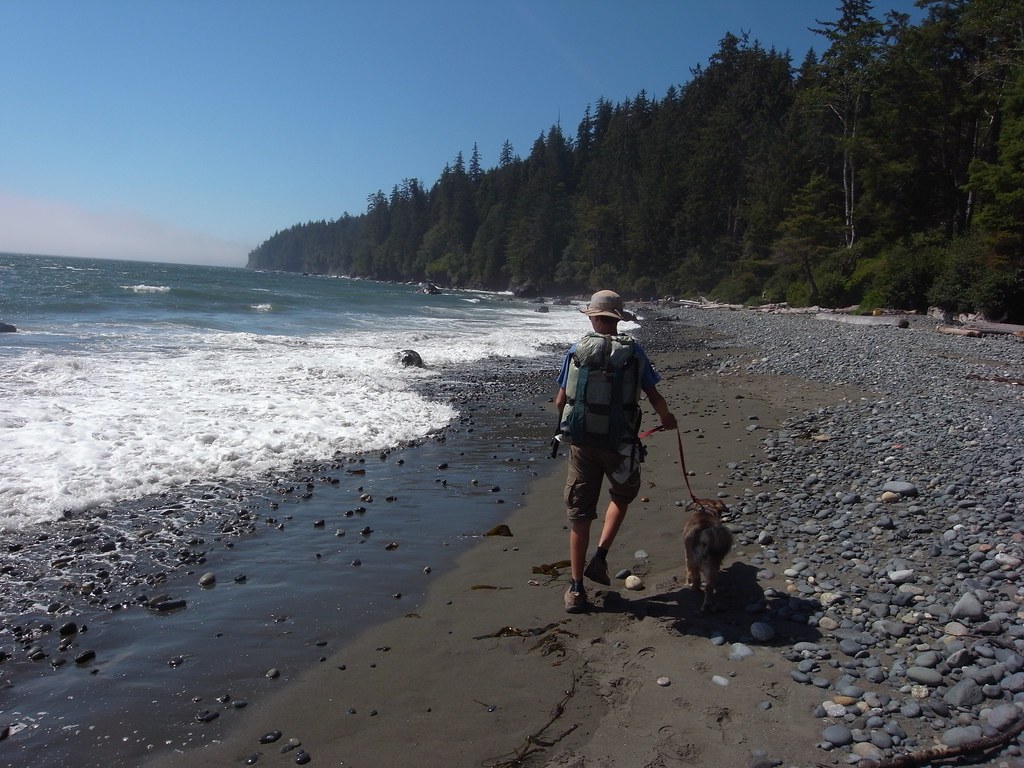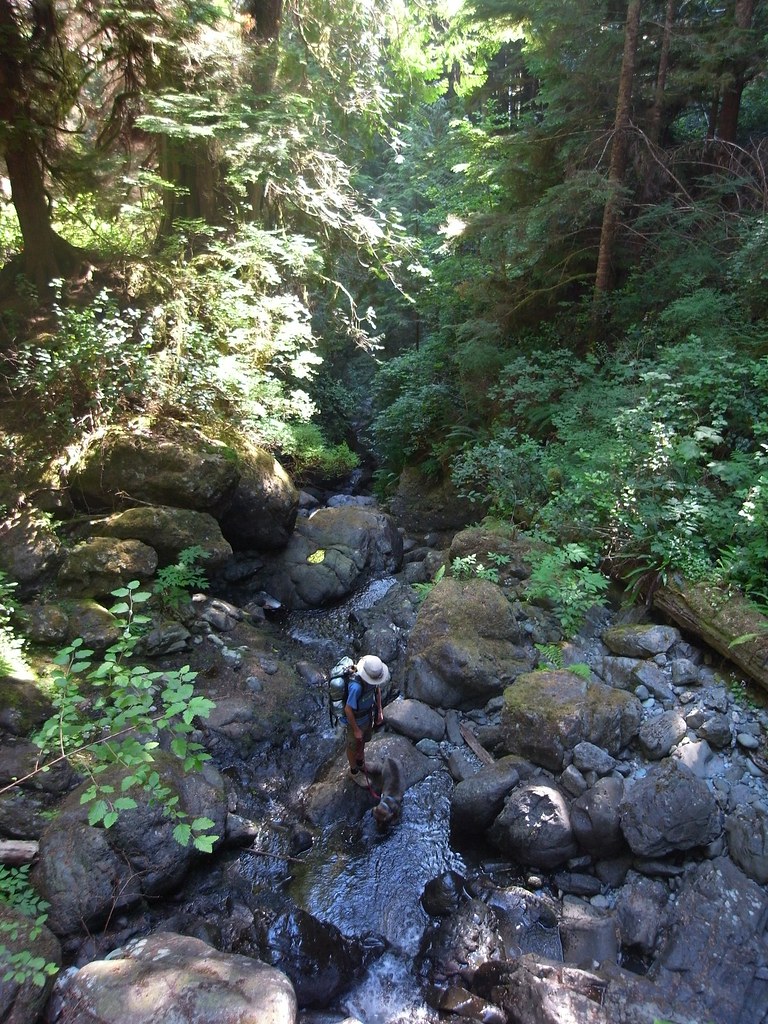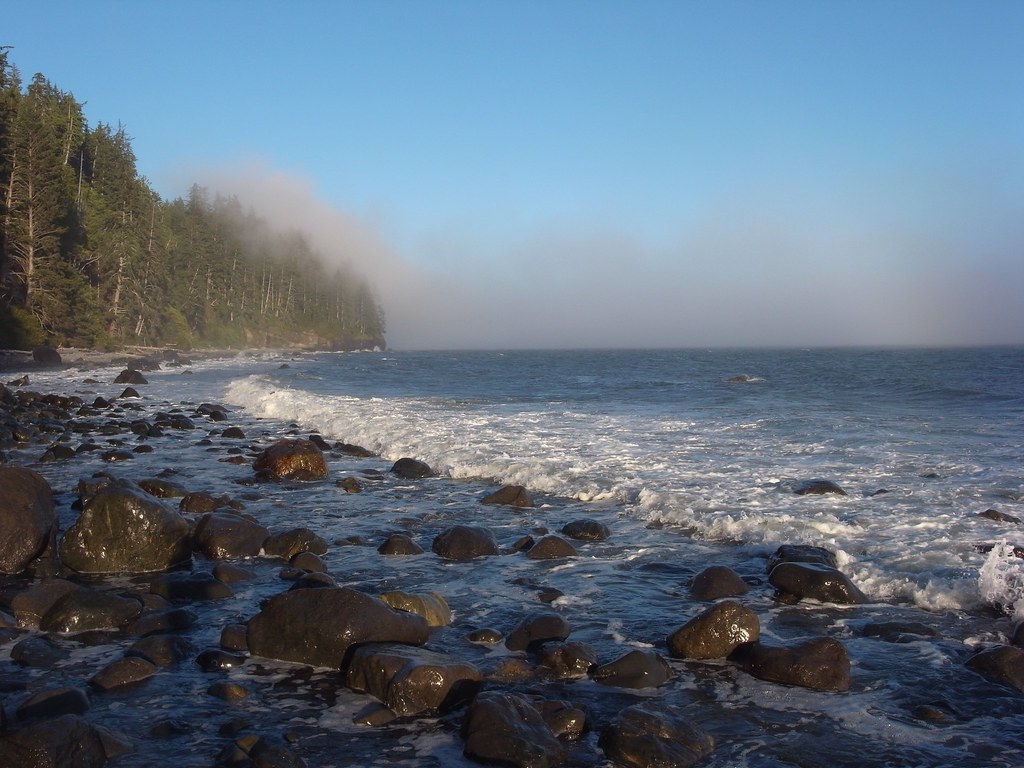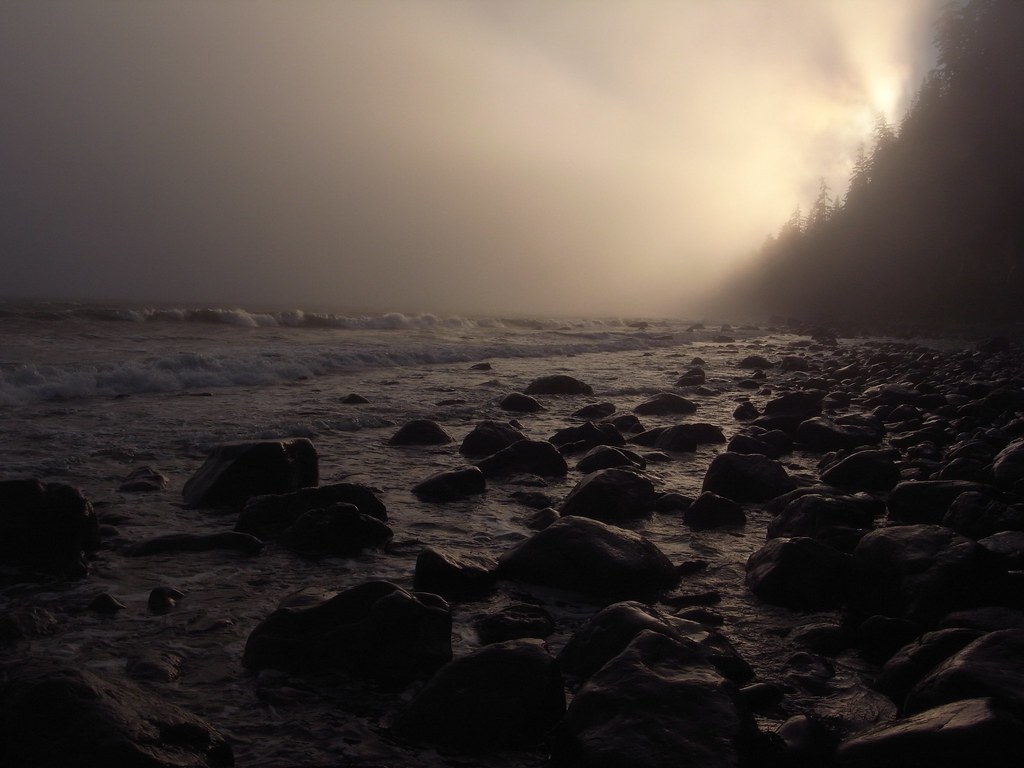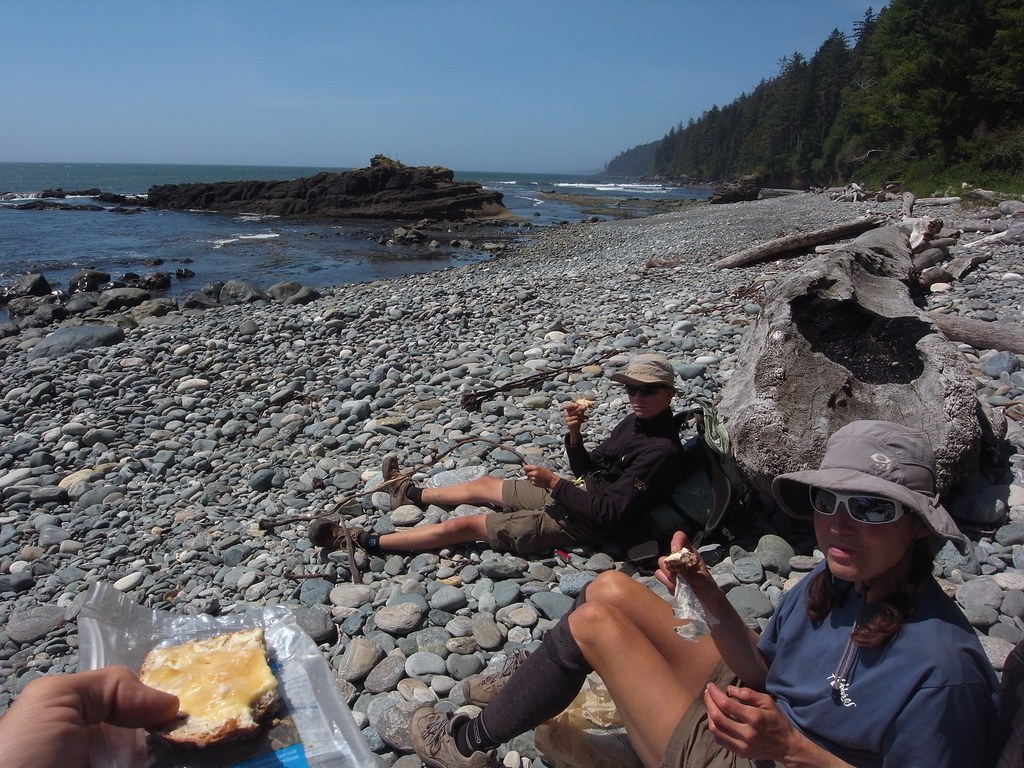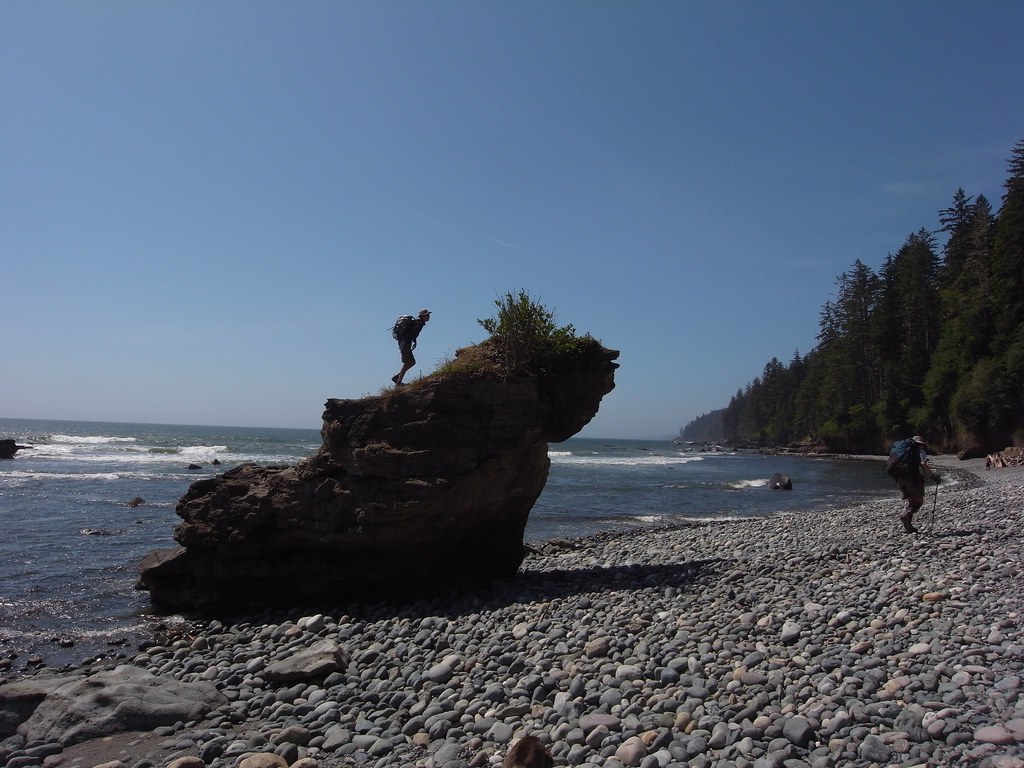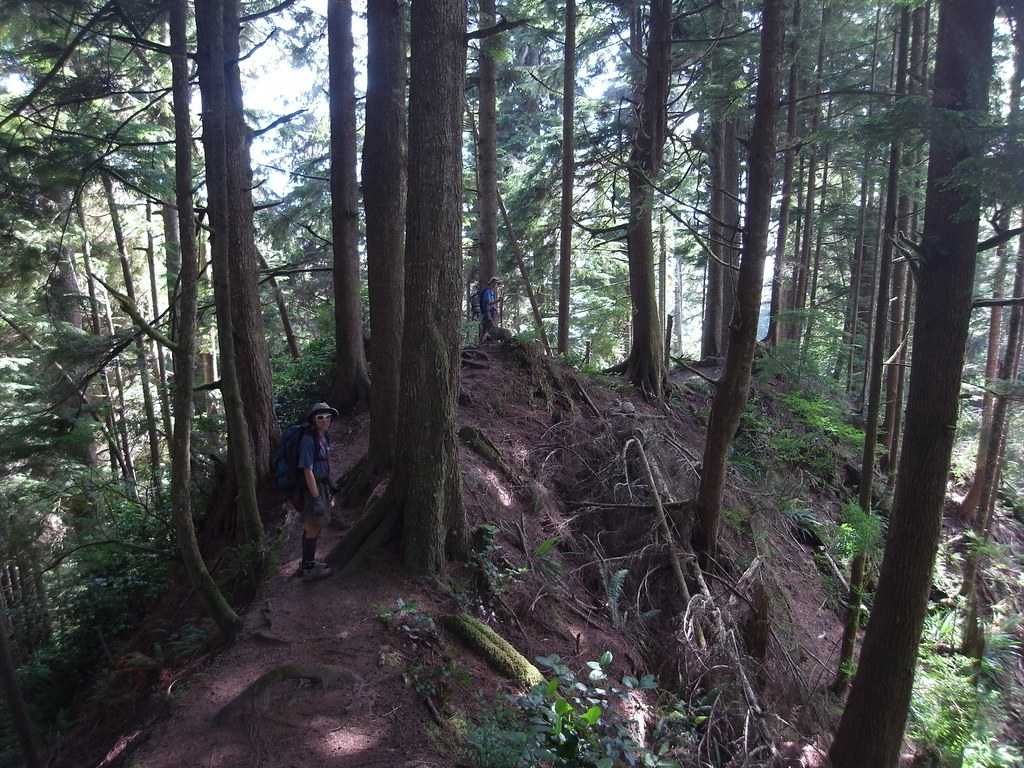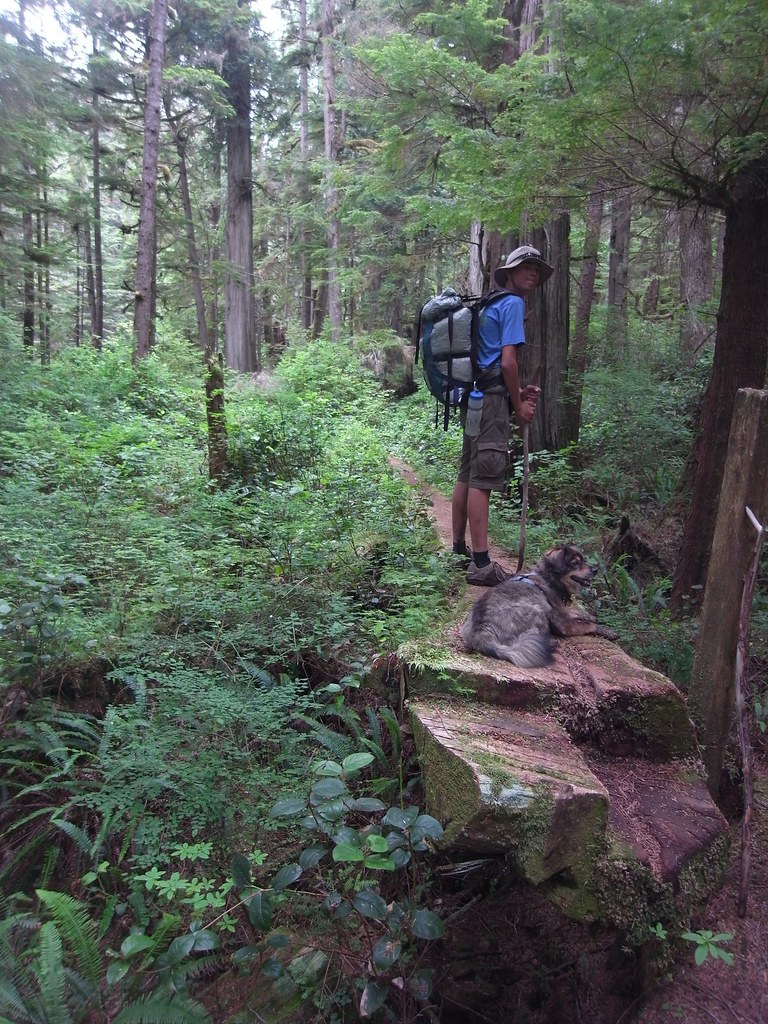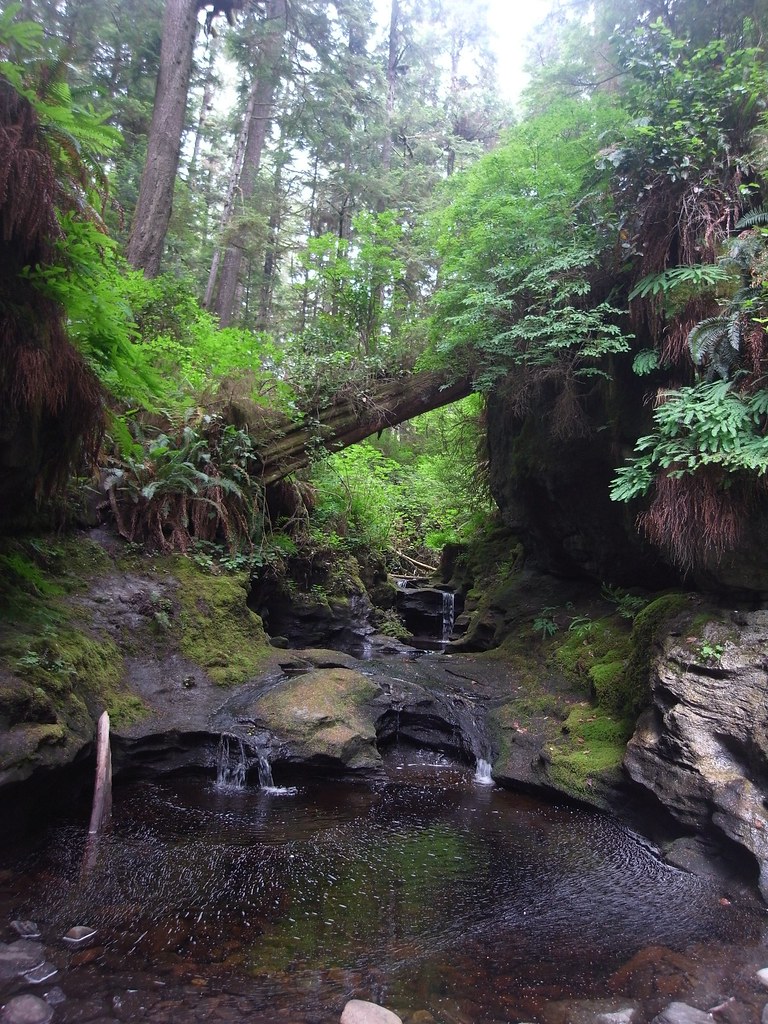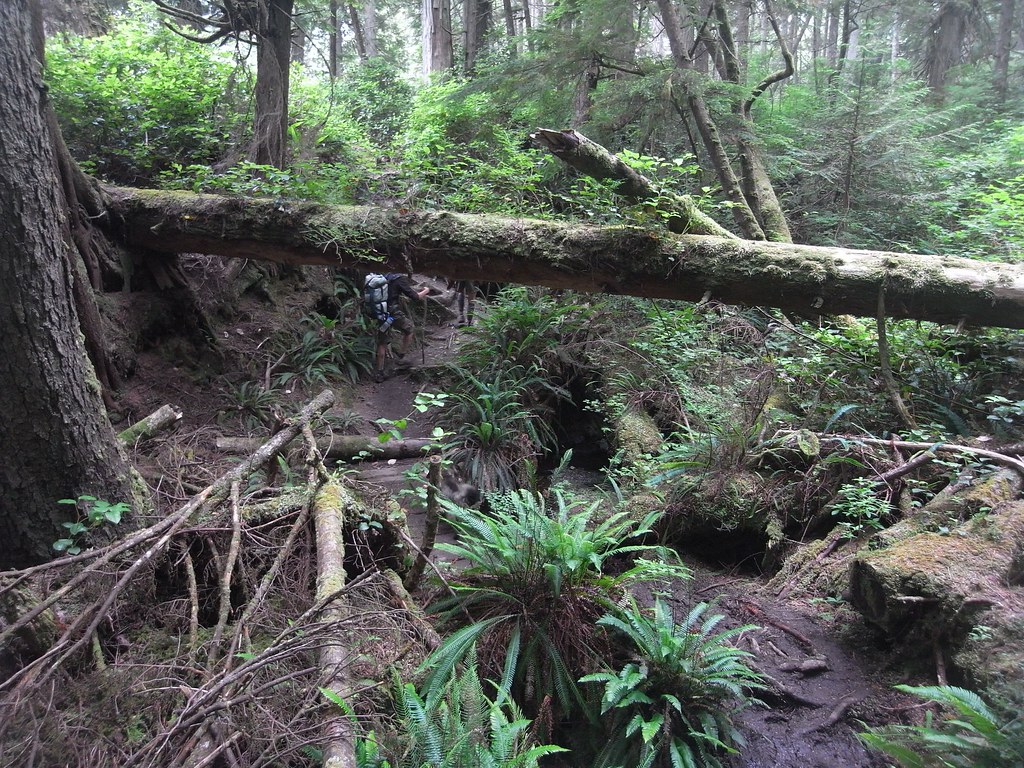Summer, 2014: Vancouver Island’s west coast is an incredible area for adventuring. Vast, rugged, hard to access, complex to navigate and seldom presenting the traveler with favorable conditions, it’s a place whose secrets take time, experience and a fair bit of luck to uncover.
Sea kayaks are typically regarded as the best way to travel the outer coast of Vancouver Island, although the nature of things out there appeals almost exclusively to seasoned paddlers. Sudden summer gales mixed with cold water, fog, surf landings and strong currents all require extraordinary seamanship. Although this post is about something different, in the vein of paddling I should mention that we did a considerable outing this summer using packrafts in definite West Coast sea kayaking territory, and really liked how it worked out.
However, for landlubbers there are also 5 recognized backpack options, listed from south to north: Juan de Fuca trail, West Coast Trail, Hesquiat peninsula, Nootka Island and North Coast trail. The WCT off course is internationally renowned and hence so wrapped in red tape that it is near impossible to even gain a foothold. So forget that one. The Juan de Fuca trail will be described in a bit.
The remaining three are nothing more than hard to find routes with boat or floatplane access only and receiving just sporadic user maintenance. On those remote beaches are where the full outer coast experience awaits. Some, like the Hesquiat/Escalante, see maybe 10 parties per season, and one has to be a strong hiker and very lucky with the weather to pull any of them off with just a week vacation.
The 30 mile Juan de Fuca trail at the very south end of the island is only a few hours of paved driving from Victoria, and considered the easiest of the five. None of the classic upper island access epics here; maintenance is regular and cars can actually get to both ends. Therefore logistics overall are simple with minimum planning and maximum payback. Perfect for a spontaneous fair weather weekend from the mainland.
That said, the hiking we encountered was surprisingly strenuous and rugged, with many steep, root-pulling style climbs, miles of beach cobbles and, although we hit the trail during a prolonged dry spell, long stretches of bottomless mud pits deep in the dark woods.
While only 30 miles most groups spend 4-5 days. 3 days is considered fast. We did it in two and half, in part thanks to the rare sunny skies, but also because a sizeable low pressure system was descending on the region from the Gulf. It was raining hard a few hours after we got out. As for hiking 10 plus miles a day of this sort of coastal terrain, well, it puts a strain on you. The constant up and over jutting headlands with scramble like moves, then hopping thru mud on half buried twigs and balancing on slippery logs across creeks makes it impossible to establish a rhythm, but it also keeps the attention tuned and makes for a fascinating journey. The beach segments were everyones favorite, off course, with the pounding surf from the typical Juan de Fuca blue sky gales, filling the air with mist and spray and sending the shorebirds hither and dither.
We camped on beautiful beaches for the two nights we were out there. Fresh water creeks came out of the forest next to our tent. The wind and crashing waves never let up.


